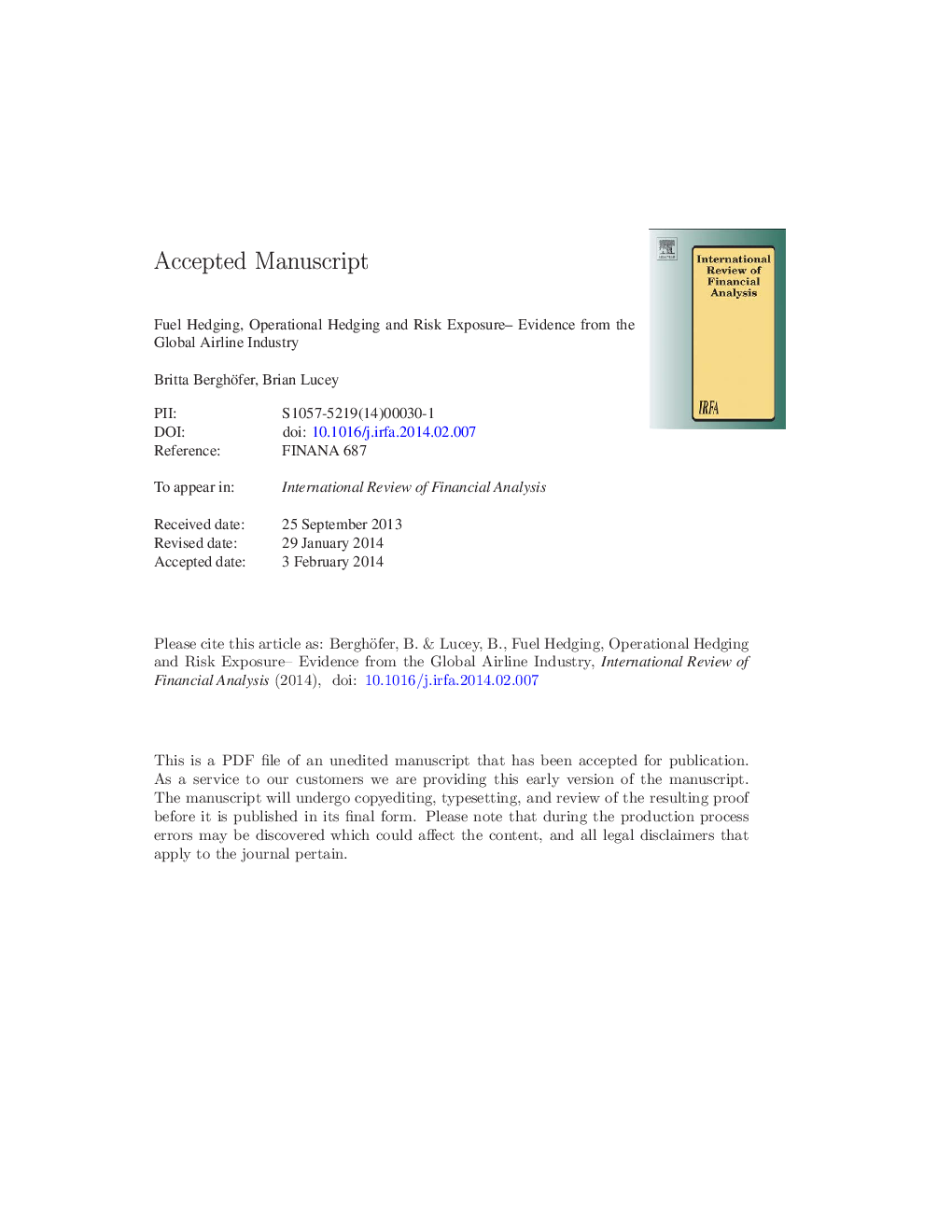| Article ID | Journal | Published Year | Pages | File Type |
|---|---|---|---|---|
| 5084874 | International Review of Financial Analysis | 2014 | 36 Pages |
Abstract
The aviation industry is characterized by low profit margins and a constant struggle with skyrocketing fuel costs. Financial and operational hedging strategies serve aviation managers as a tool to counteract high and volatile fuel prices. While most research on fuel hedging has concentrated on the U.S. airline market, this paper is the first study to include airlines from Asia and Europe. We analyze 64 airlines over 11Â years and find that Asian carriers are more negatively exposed than European airlines but less exposed than North American airlines. In contrast to Treanor, Simkins, Rogers and Carter (2012), this study finds less significant negative exposure coefficients among U.S. carriers. Using a fixed effects model we reject the hypothesis that financial hedging decreases risk exposure. One possibility is that the decreased volatility in jet fuel prices over the past few years has perhaps made airlines less exposed to fuel prices and hence, financial hedging is less effective. Operational hedging, defined by two proxies for fleet diversity, does not reduce exposure significantly, either. In contrast, a one percentage point increase in fleet diversity, calculated with a dispersion index using different aircraft types, increases the risk exposure coefficient by 1.83%. On the other hand, fleet diversity, calculated with different aircraft families, increases exposure by only 0.63%. These results are supported by the global trend of airline managers to reduce fleet diversity. Airlines have reduced their fleet diversity by 7.70% or 10.77% (depending on the proxy) between 2002 and 2012. The greatest reduction can be found among European airlines with 23.12% (28.04%).
Related Topics
Social Sciences and Humanities
Economics, Econometrics and Finance
Economics and Econometrics
Authors
Britta Berghöfer, Brian Lucey,
